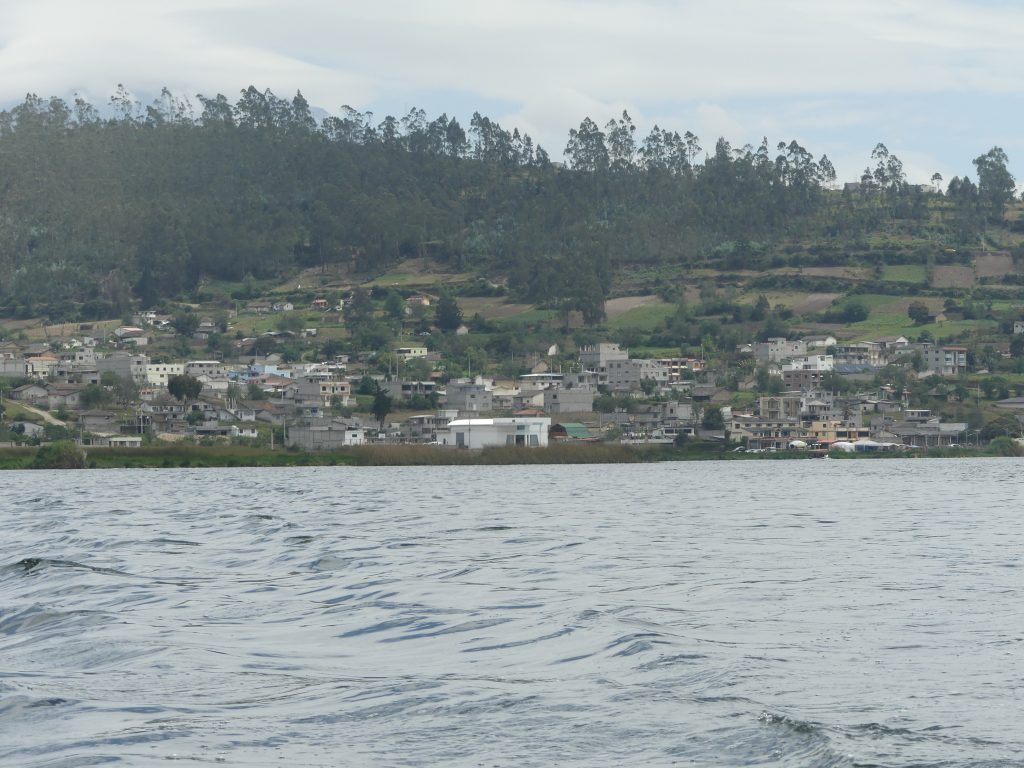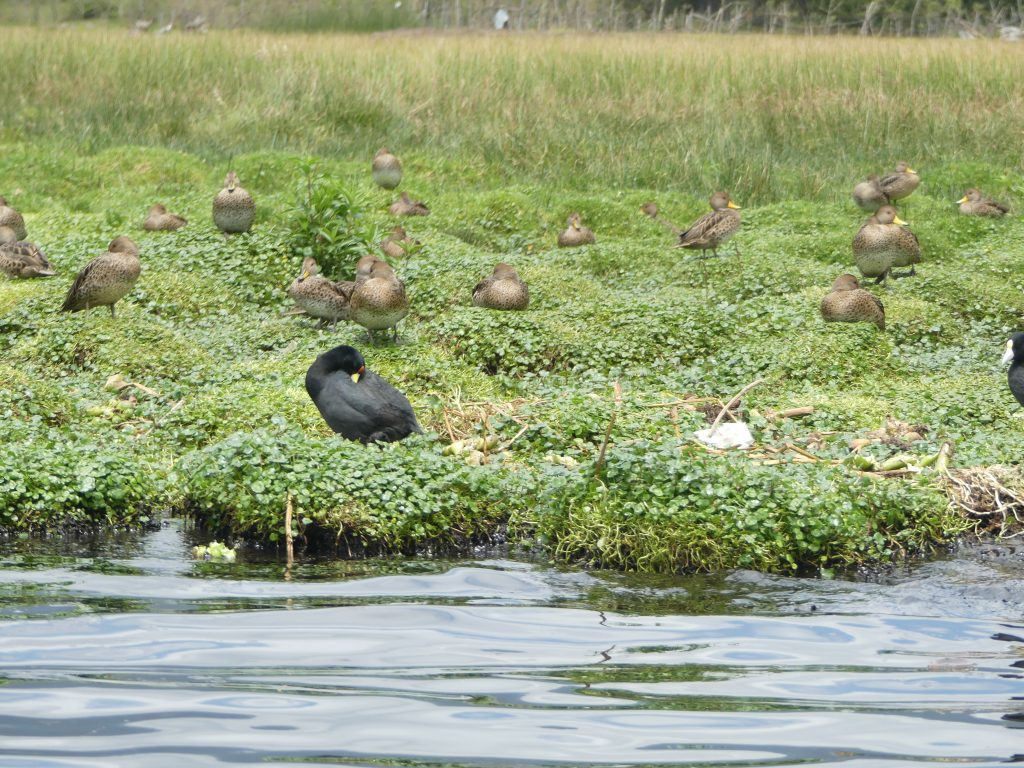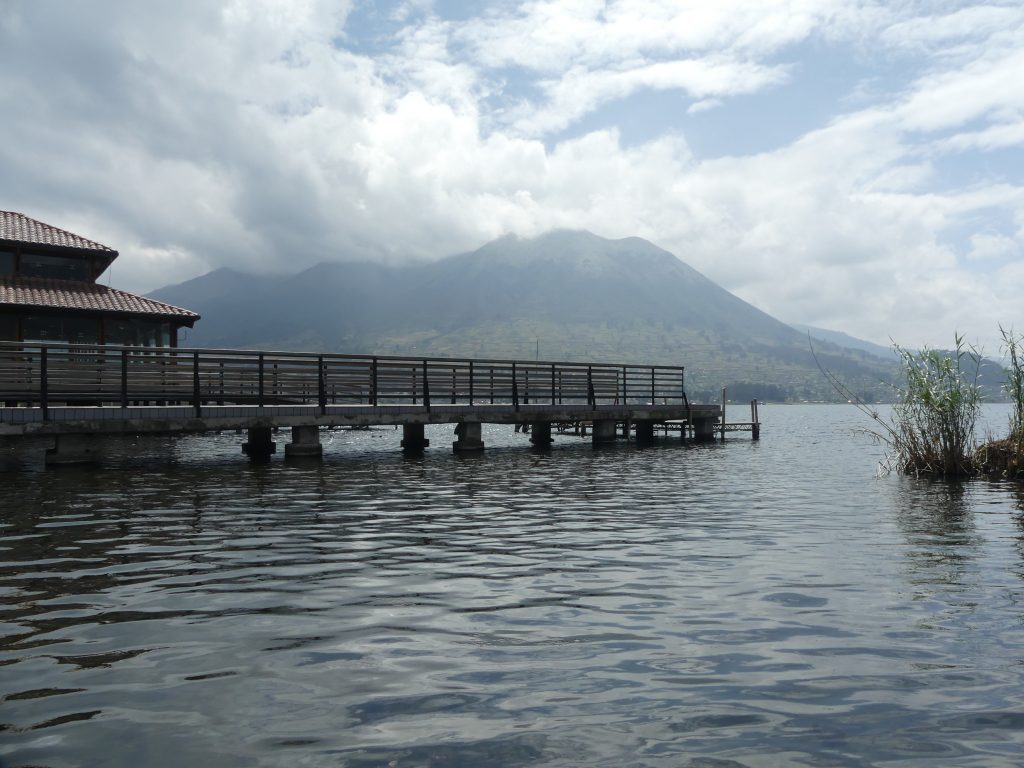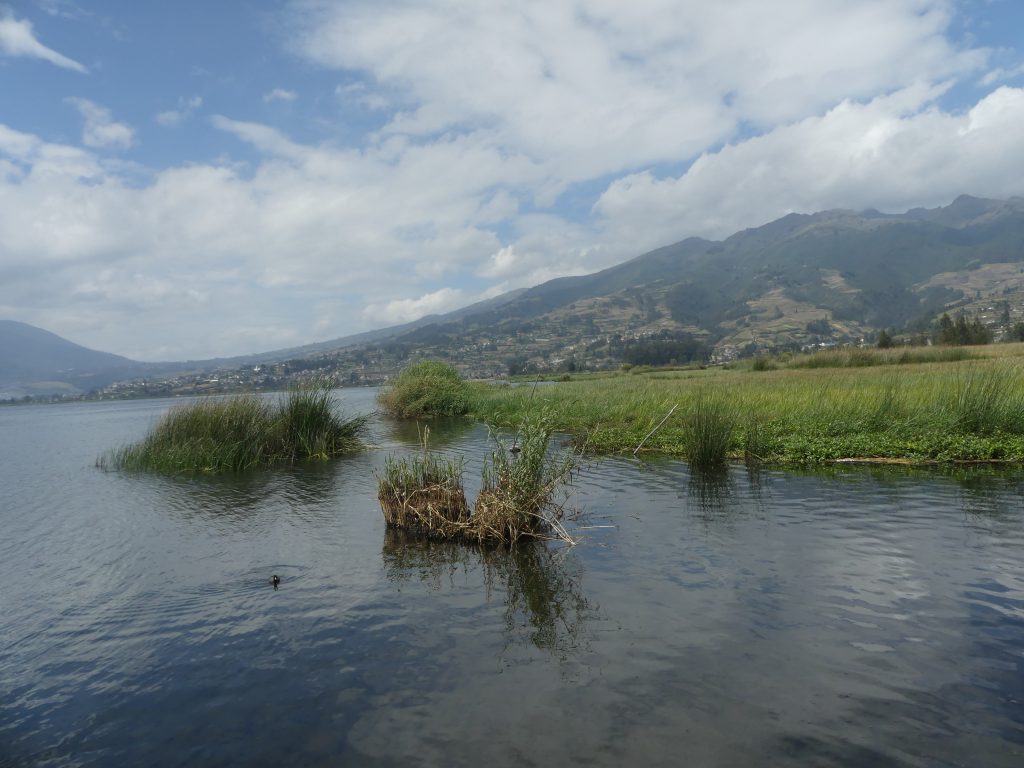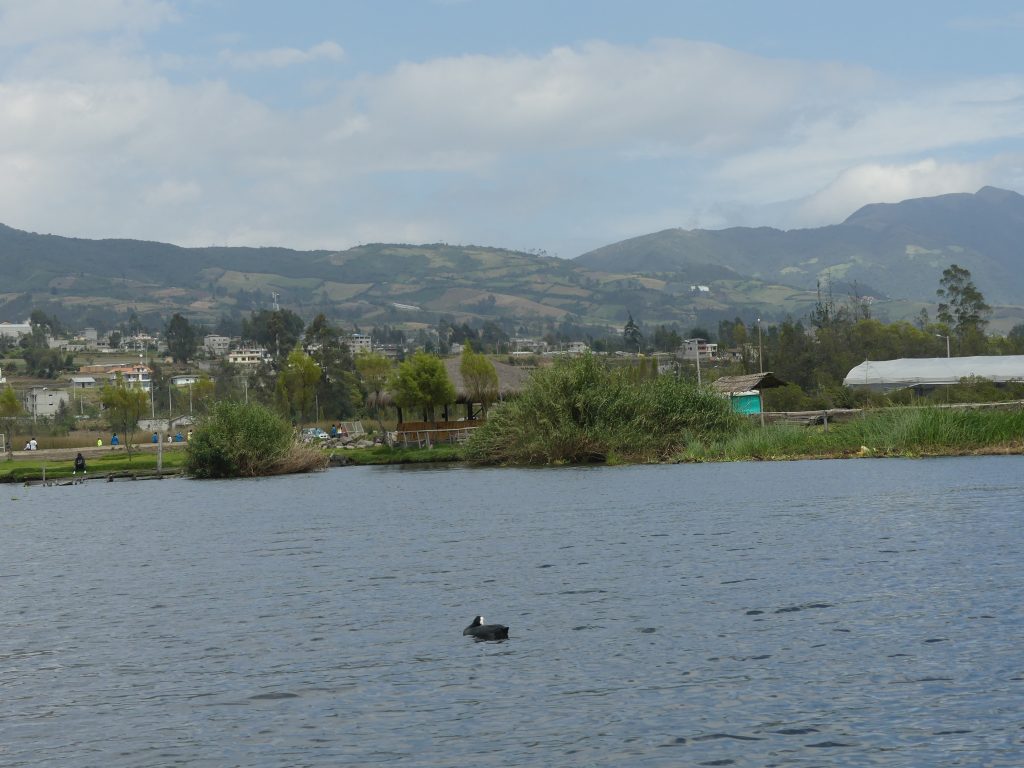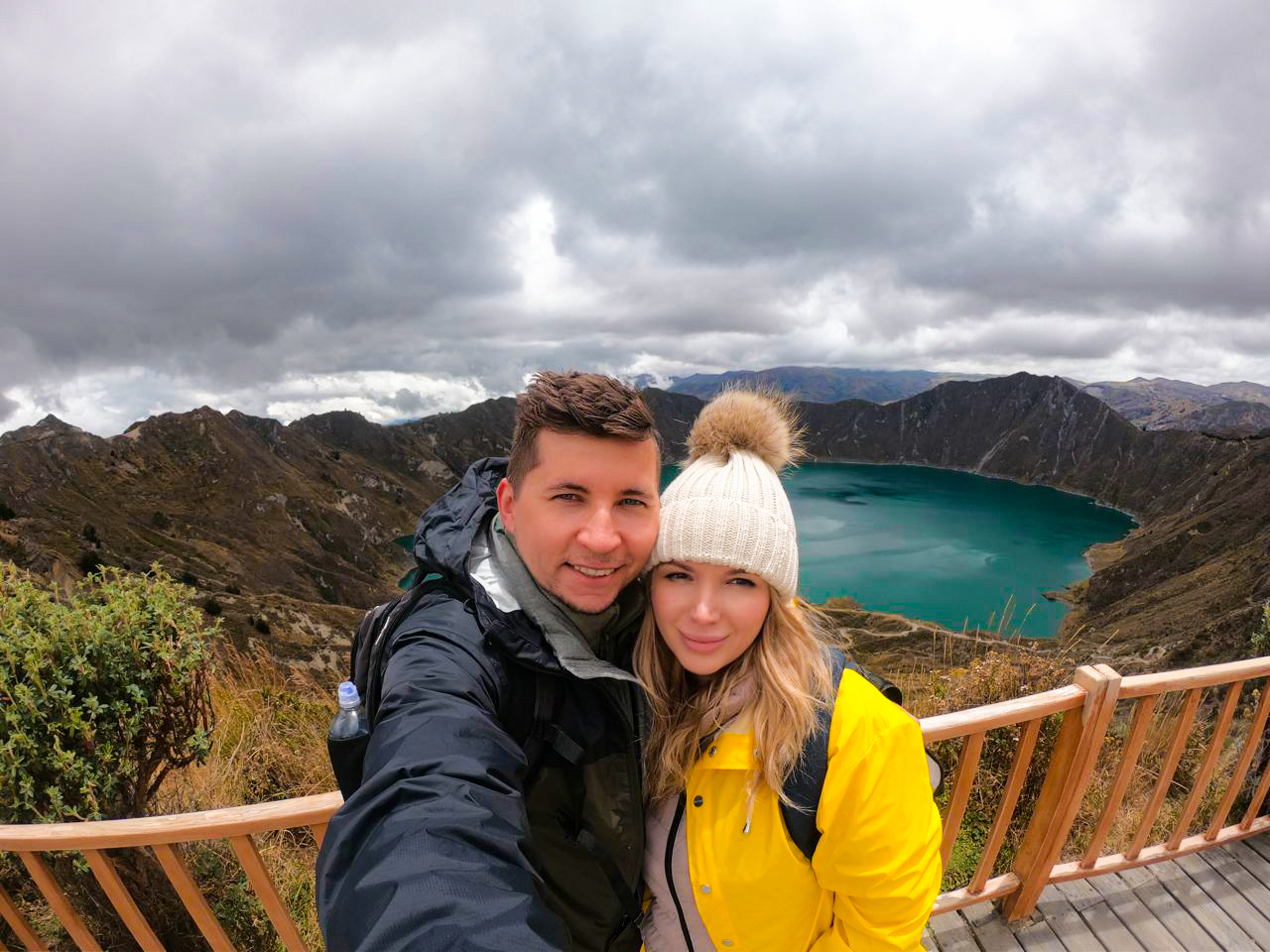Otavalo has a beautiful lake that formed at the foothills of the Imbabura volcano. The San Pablo Lagoon, located at the base of the magnificent Imbabura Volcano, offers several walkways leading to natural beauties such as El Lechero and Mira Lago, the former of which is located on one side of the Pan Americana.
The lagoon covers 7 km2 and is 48 meters deep in the center. The totora, a commodity used to manufacture handicrafts that are then marketed, is found on the lake’s shores.
Looking back, visiting Lago San Pablo offered more than just scenic views – from local legends to water activities and community connections. Skip the uncertainty I faced and get a FREE personalized Ecuador trip quote from my trusted local experts who know exactly how to combine this hidden gem with other Otavalo highlights. Your booking helps support both this blog and local Ecuadorian communities.
How to Get to Lago San Pablo
By Private Car
Starting from Quito, my wife and I took the Gonzáles Suárez exit, winding through the charming villages of San Pablo and Araque. This route felt like the quickest and most scenic way to reach Araque Water Park, and we enjoyed spotting glimpses of local life as we passed each village.
Coming from Otavalo or Ibarra, we found that the left turn at Eugenio Espejo led us straight to the old pier. From there, we traveled down a road lined with quaint settlements like Camuendo and Compania, each with its own unique character, until we finally arrived in Araque. It was a beautiful drive, allowing us to immerse ourselves in the local culture along the way.
By Public Transport
When we traveled from Quito, we hopped on a bus and made sure to get off at the Gonzáles Suárez stop. From there, we grabbed a cab, which took us straight to our destination with ease. It was simple and convenient, perfect for anyone looking for a straightforward route.
If you’re coming from Otavalo, there are a few cooperative bus options like Otavalo, Los Lagos, and Imbaburapac. They’ll take you through the nearby settlements of San Pablo, Araque, and Trojaloma, where you can easily access the beautiful lagoon. We were pleasantly surprised by the cost – just 25 cents for the ticket – making it a budget-friendly way to explore the area and get closer to the heart of the local communities.
Flora and Fauna Around Lago San Pablo
Rainbow trout and carp are among the lagoon’s ichthyological inhabitants. Other wildlife sightings that inhabit the lagoon are:
- Grebes
- Cormorants
- crow ducks
- white heron
- Gaucabas
- Ducks
- Patillos
- Gallaretas
- Hummingbirds
- sea swallows
- cullingos flag
The eastern, northeastern, and southern beaches of La Laguna have the largest concentration of totorales. There are also eucalyptus, willow, and pine woods.
Activities in Lago San Pablo
At Lago San Pablo, my wife and I found a fantastic lineup of high-altitude water activities, perfect for all ages and interests. We tried out a few, from speed boating to water cycling, and even watched some people wakeboarding and kneeboarding, which looked thrilling. For those who love variety, there’s everything from buoys to kayak adventures – truly something for everyone.
The lake also comes alive during yearly events. People gather to enjoy championships, slalom races, motorcycle gymkhana, and impressive water sports displays. It’s an exciting time, and we could feel the energy building as locals and visitors prepared for the festivities.
One of our favorite spots was the San Pablo Lake Swing at Puerto Lago Inn. From here, we had the most incredible view of Imbabura Volcano, standing majestically over the lagoon. It’s a scene that captures the unique landscape shaped by the volcano, and we spent a while just soaking it all in, realizing how special this place really is.
Trust me, while Otavalo’s market is famous, adding Lago San Pablo creates a complete cultural experience! Want an expertly planned itinerary that balances shopping with natural wonders and local traditions? Get a FREE quote from my recommended local agency. Your booking supports this blog and local Ecuadorian businesses.
Lago San Pablo has a lively community vibe, with frequent club events that bring locals and visitors together. We learned that the Yacht Club often hosts global sailing competitions, drawing competitors from all over. On weekends, they organize fun activities like powered canoe trips, rowing, and boat rides – all perfect for a relaxed day on the water. We even considered taking one of the boats out ourselves, and for those who love fishing, the Chicapan Fishing Club arranges sport fishing trips for an added adventure.
One unique stop we found fascinating was the Punyaro Fishing Station. This place is dedicated to studying and testing the adaptability of various ichthyological (fish) species. It’s a lesser-known gem for those curious about local wildlife and environmental studies.
If you plan to visit in September, the timing couldn’t be better. That’s when the Yamor celebrations happen, filling San Pablo Lake with energy, culture, and vibrant festivities. It’s a special time that made us appreciate the local traditions even more.
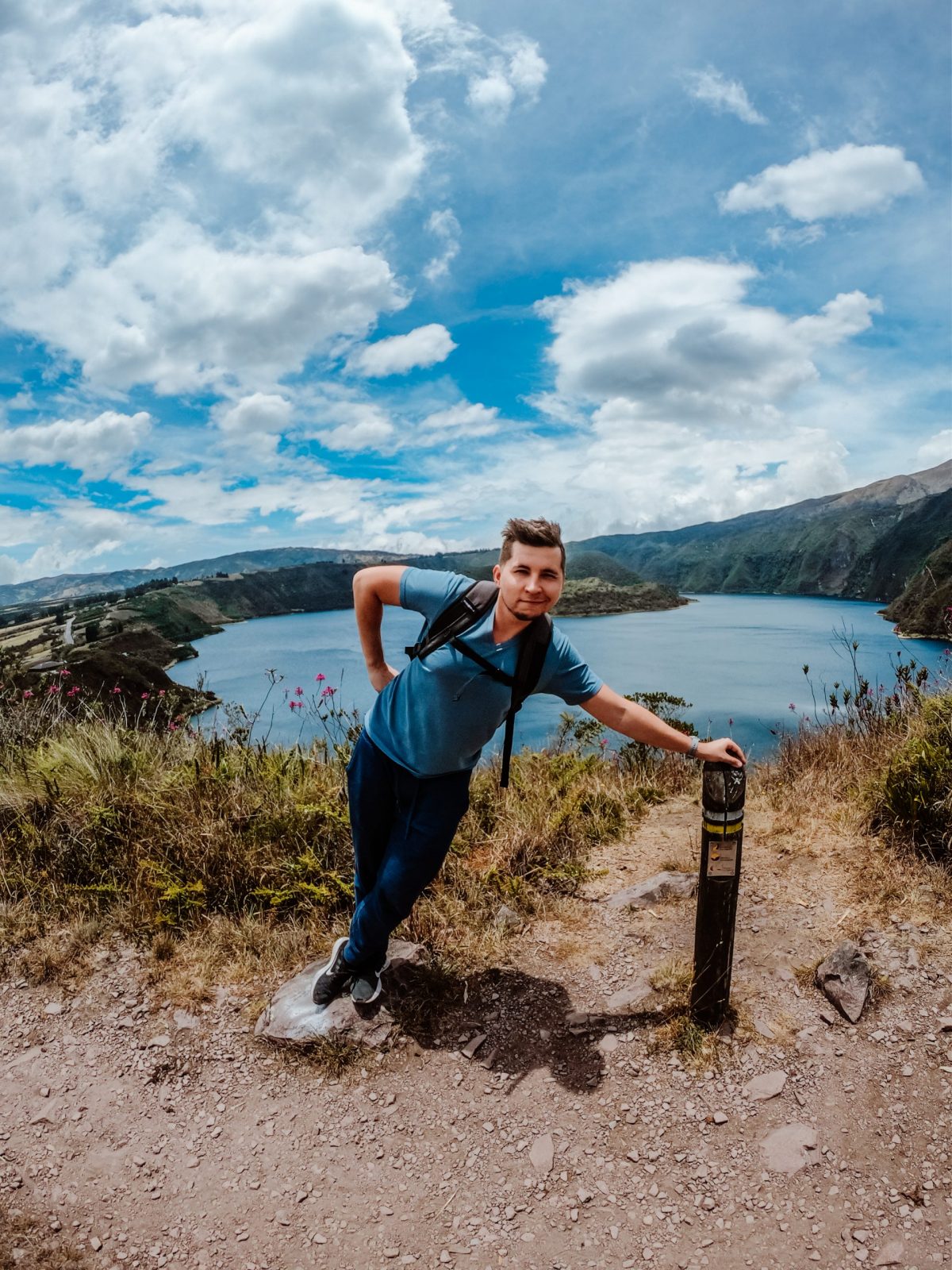
Planning trip to Ecuador?
My wife and I rented a car for 15 days and traveled from the northern part of Ecuador to the south, visiting amazing cities like Quito, Otavalo, Baños, Cuenca, and Guayaquil. Along the way, we explored iconic places such as Cotopaxi National Park, Quilotoa Lake, and many more breathtaking destinations.
Not many blogs cover traveling in Ecuador in detail, so I spent nearly three weeks creating this comprehensive Ecuador travel guide based on our trip. It’s packed with everything you need to know, and honestly, I consider it the best free travel guide about Ecuador out there.
If you’re planning a trip to Ecuador, don’t forget to use my link for discounted hotel prices through Booking.com. It’s a great way to support my blog while saving money on your accommodations!
Visiting Lago San Pablo
Legend has it that Lago San Pablo was born out of a powerful love story. My wife and I were drawn to this tale of an indigenous couple whose love was forbidden by their families. In the story, she transformed into the lake, while he became El Lechero, a lone ancient tree with branches that seem to reach out, forever embracing his beloved. Standing by the lake, with the tree in view, it’s easy to feel the depth of that connection and appreciate how these symbols have been woven into the landscape and culture.
Today, the lake is more than just a beautiful spot – it’s a tribute to Andean heritage and Ecuadorian warmth. Locals have created a welcoming haven here, building a space that feels like home to everyone who visits. My wife and I felt this warmth from the residents, who shared stories, local dishes, and tips on the best water activities. The lake has this magnetic pull that makes you want to come back, whether it’s for the peaceful mornings by the water, the delicious food, or the kindness of the people.
If you’re ever in Otavalo and have some extra time, we’d highly recommend visiting Lago San Pablo. It’s not only a place of beauty but also rich in stories and history that deepen your connection to Ecuador.
Plan perfect trip to Ecuador & Galapagos
I spent countless hours researching everything about traveling to Ecuador, and I created this blog for fellow travel enthusiasts who want the best, most reliable information. But if you want to save time, we’ve partnered with the top local agency to plan your dream trip.


